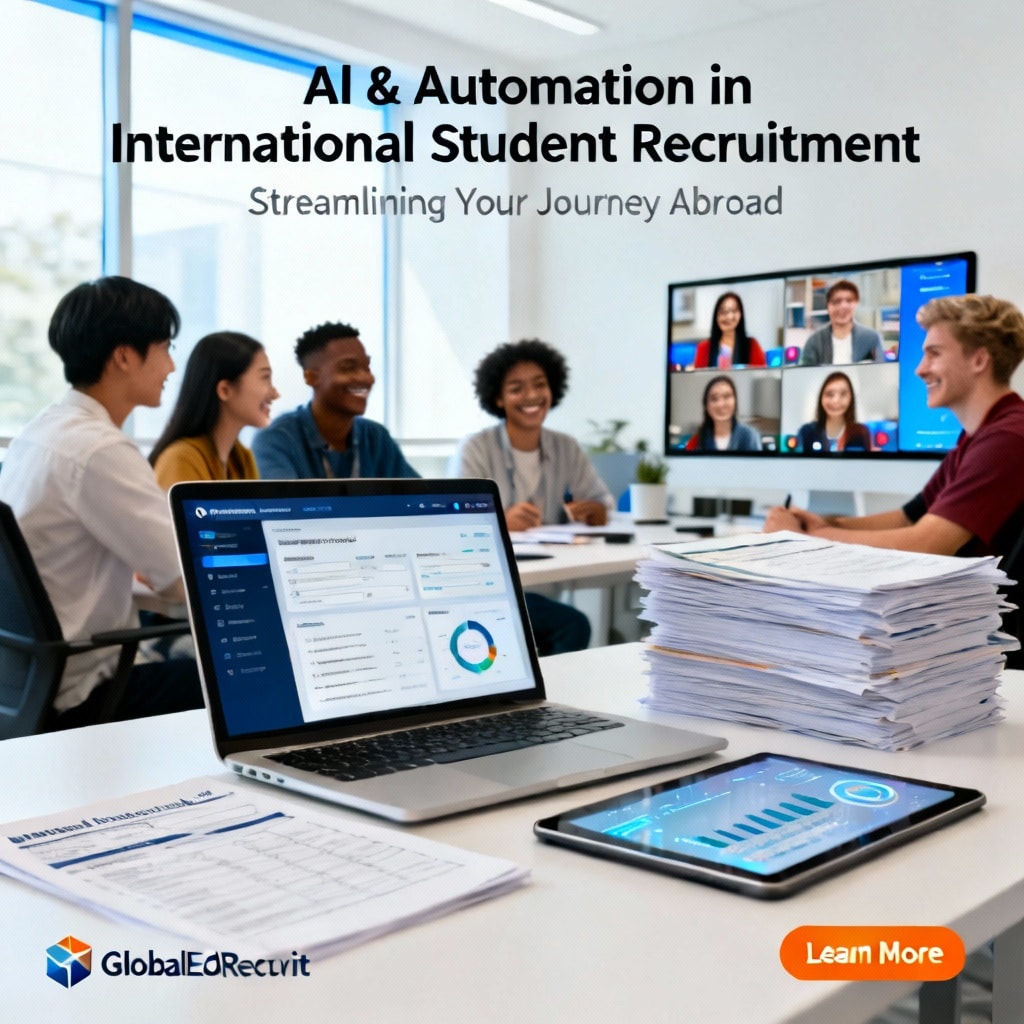AI and Automation in International Student Recruitment
Quick Navigation
- AI and Automation in International Student Recruitment
- Why AI and automation matter for international recruitment
- Key use cases for AI and automation
- Implementation roadmap for admissions teams
- Case examples — aligning programs to markets
- Conclusion — the strategic advantage
- Take the Next Step with Study in Turkiye
AI and Automation in International Student Recruitment
AI and Automation in International Student Recruitment are reshaping how universities, recruitment agencies, and education teams attract, assess, and enroll international students. For HR, admissions, and marketing professionals, these technologies promise faster processing, higher-quality leads, and personalized student journeys — while preserving compliance and institutional values.
At Study in Turkiye, we combine market expertise, a streamlined admissions process, and scalable automation to help partners convert global interest into enrolled students. This post explains why AI and automation matter now, presents actionable steps for implementation, and shows how Study in Turkiye’s services and partner universities (including Medipol University, Istinye University, Ozyegin University, and others) can be integrated into an automated recruitment strategy.
Why AI and automation matter for international recruitment
- Faster response times: Automated chatbots and workflows reduce first-response time from days to minutes, increasing prospective-student engagement and conversion.
- Better lead quality: Predictive lead scoring identifies applicants most likely to enroll, enabling teams to prioritize high-value outreach.
- Scalable personalization: AI-driven content personalization serves targeted program recommendations across languages and regions.
- Operational efficiency: Automated document verification, scheduling, and visa-checklists reduce administrative bottlenecks and error-prone manual work.
- Measurable ROI: Integrated analytics tie marketing spend and recruitment activities to conversion, yield and retention.
Key use cases for AI and automation (actionable examples)
1. Lead generation and qualification
- Use AI to score incoming leads by engagement patterns, region, and academic history.
- Automate multilingual microsites or landing pages promoting flagship programs at partner universities such as Medipol University and Ozyegin University.
- Route high-priority leads to senior counselors and lower-priority prospects to nurture sequences.
2. Conversational AI and 24/7 support
- Deploy chatbots that answer FAQs, qualify applicants, and schedule counseling calls.
- Integrate bot hand-off to human advisors for complex visa or scholarship queries — preserving human judgment where it matters most.
3. Automated document intake and verification
- Use OCR and AI-based document validation to pre-check transcripts, diplomas, and passport data.
- Automate flags for missing or inconsistent documents, reducing back-and-forth and speeding admissions decisions.
4. Personalized program recommendations
- AI models can match applicant profiles to programs across partner universities (e.g., Uskudar University for behavioral sciences, Bilgi University for communications).
5. Visa and pre-arrival automation
- Automate visa document checklists, embassy appointment reminders, and pre-departure guidance.
6. Post-enrolment engagement and retention
- Automate onboarding sequences: registration steps, health insurance enrolment, accommodation confirmation, and orientation schedules.
Implementation roadmap for admissions teams
Phase 1 — Audit and alignment (0–2 months)
- Map existing recruitment workflows, systems and data sources (CRM, website, application portal).
- Identify high-volume tasks for automation.
- Define KPIs.
Phase 2 — Pilot and integrate (2–6 months)
- Pilot a conversational AI on a priority market or program.
- Integrate marketing automation with your CRM.
Phase 3 — Scale and optimize (6–12 months)
- Expand automation across programs and geographies.
- Implement predictive analytics for enrollment forecasting.
Phase 4 — Continuous governance
- Maintain compliance reviews, bias audits of AI models, and data-protection checks.
Case examples — aligning programs to markets (practical pairings)
- Medicine and health sciences: Medipol University and Istinye University.
- Engineering and technology: Ozyegin University.
Conclusion — the strategic advantage
AI and automation in international student recruitment are no longer optional. They are strategic levers that improve speed, quality and scalability while enabling admissions teams to focus on relationship-building and high-value decisions. For HR, marketing and university partners, the priority is to implement pilots with clear KPIs, maintain human oversight, and integrate services across the student lifecycle.
Take the Next Step with Study in Turkiye
Ready to pilot AI-driven recruitment or integrate automation across your admissions funnel? Contact Study in Turkiye to schedule a consultation, set up a pilot program, or explore agency partnerships.

